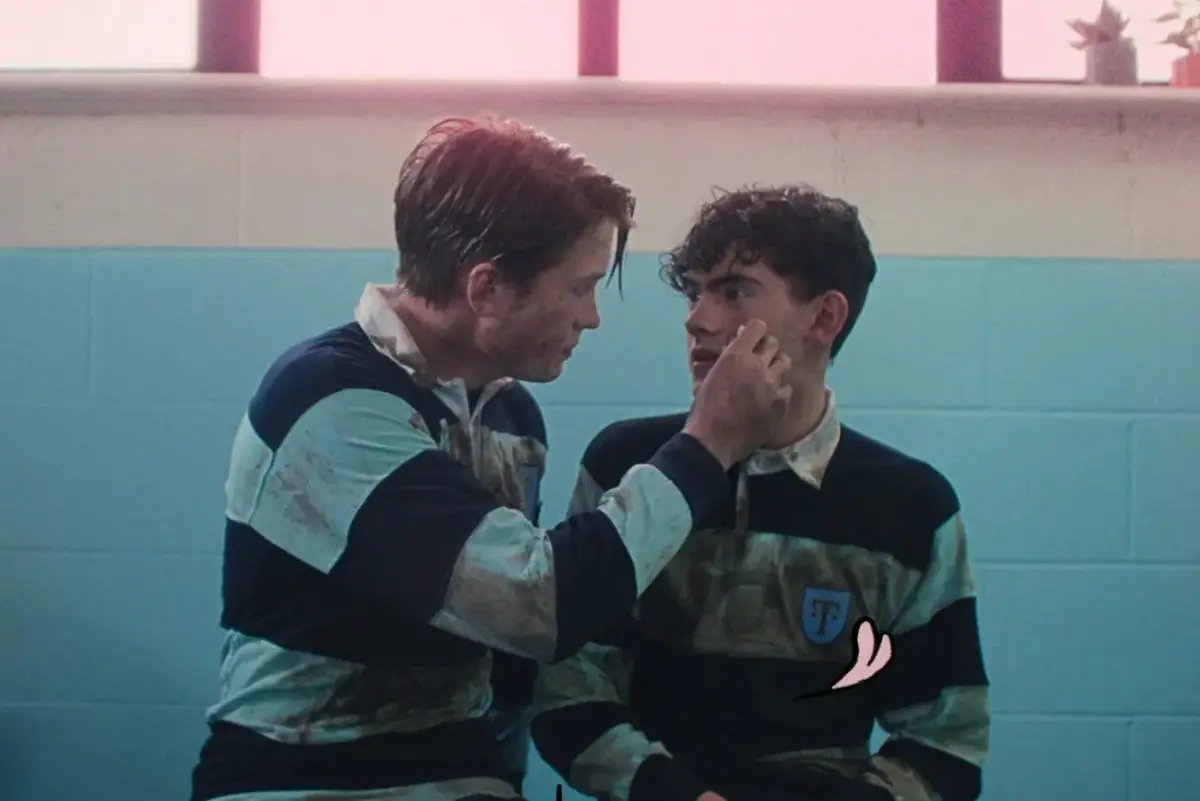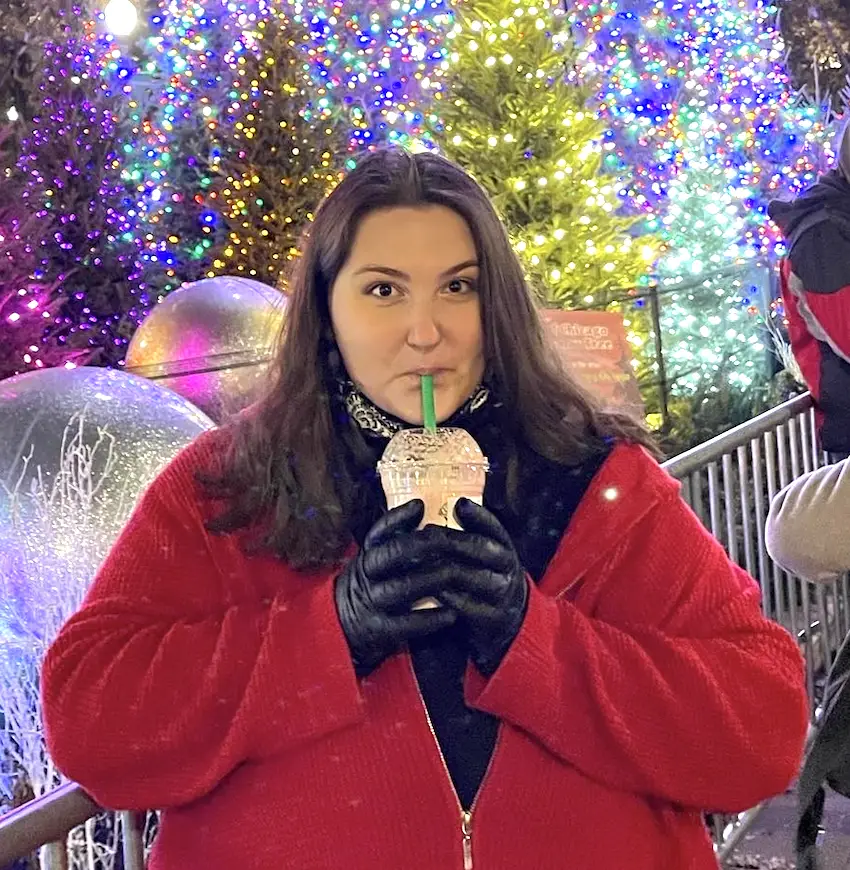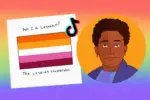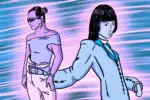For the first time ever, lesbians hold the largest share of LGBTQ+ representation, making up 40% of all queer characters portrayed on broadcast television in the year 2022. This number has doubled in size over the past five years: In 2017, the same survey identified only 24% of LGBTQ+ characters as lesbians, a fact that reaffirms the significance of the new lesbian plurality. But beyond just the growth in sapphic representation, this achievement is notable for the queer community because, historically speaking, gay men tend to dominate queer representation within the mainstream media, and that is no different in Netflix’s “Heartstopper”.
So, this is a good thing, right? Are lesbian characters finally getting the recognition they deserve? Well, not exactly. While the quantity of representation for lesbians and other sexualities is increasing, the quality remains just as poor.
When looking at statistics, it’s important to consider exactly what information is being gathered. In these annual reports on LGBTQ+ representation in television, researchers consider the total number of queer characters across the medium, but exclude details such as screen time or character development in their statistics. So, while television might feature a record-breaking number of lesbian characters at the moment, that does not mean their representation is also at its peak.
The ill- and underrepresentation of lesbian characters extends far beyond the reaches of broadcast television. In television and media of all forms, trends continue to favor men-loving-men (MLM) relationships over women-loving-women (WLW) ones. Even in the best examples of queer media, this injustice persists.
Netflix’s new original series “Heartstopper,” based on Alice Oseman’s graphic novels, is often praised by fans as a revolutionary example of young queer love. Hollywood Insider writer (and “Heartstopper” fan) Anica Muñoz described the show as “a lively and fresh adaptation that truly understands the curiosity of friendship and the LGBTQ+ experience.” While reviews celebrating the show’s depiction of queer joy are valid, it’s important to realize that any claim of groundbreaking LGBTQ+ representation only applies to the G.
In internet circles, “Heartstopper” is known for featuring a variety of supporting characters of many different queer identities; examples of such “representation” include trans girl Elle Argent (Yasmin Finney, a trans actor herself) and lesbians Tara Jones (Corinna Brown) and Darcy Olsson (Kizzy Edgell). However, despite the off-screen love shown for these characters, there is no denying that the primary — and, arguably, only legitimate — representation within “Heartstopper” is its MLM relationship between schoolboys Charlie Spring (Joe Locke) and Nick Nelson (Kit Connor).
Charlie and Nick could not be more different: Charlie, a dorky year 10 student with a small group of friends, is an outsider, while Nick, a star rugby player and year 11 heartthrob, is the most popular boy in school. The biggest difference, though, is that Charlie is the only openly gay student at school, and Nick is not. Everybody believes Nick is straight — including himself — but, after a seating chart miracle lands the two boys at the same table, nothing can stop Nick from falling for Charlie just as Charlie falls for Nick.
The distinction between the treatment of MLM protagonists Charlie and Nick and other supporting characters is simple but significant; “Heartstopper” features a variety of queer identities, but it does not represent them.
So why include other queer supporting characters if you don’t plan on representing them? In dramatic cases, writers and producers might tokenize LGBTQ+ characters as a way to appear inclusive; however, considering the original source material, such a situation is doubtful here. Rather, the lack of development for supporting characters likely stems from cuts made to the story during the transition from text to television: “Heartstopper” as a series of graphic novels has thousands of pages to introduce characters and develop relationships, but “Heartstopper” as a television show has only four hours to tell the same story — and more. So to preserve the central plot, side characters must make sacrifices.
WLW characters Tara and Darcy in particular make many of these sacrifices. In the Netflix show, their relationship is used on multiple occasions as a plot device, propelling forward the central MLM story of Nick and Charlie.
When flashbacks of a kiss shared at a year 7 dance establish Tara as Nick’s most influential crush, it suddenly becomes vital to emphasize the impossibility of a future romance between their characters — after all, “Heartstopper” is the love story of Nick and Charlie, not Nick and Tara. So, to stress the platonic nature of Nick and Tara’s relationship, the plot exploits her sapphic romance to eradicate any heterosexual possibility: In the show’s second episode, “Crush,” Tara and Darcy share their secret romance with their new friend, Elle. Though Elle doesn’t betray her friends’ secret or sexualities, she makes it clear to Charlie — and the audience — that the possibility of Nick and Tara being together is exactly zero.
Tara is only revealed as a lesbian to validate Nick’s romantic availability. “Heartstopper” could reveal Tara and Darcy’s relationship at any time, but it doesn’t; it waits until the peak of Charlie’s crush on Nick to announce that, despite the whole school believing Nick and Tara are involved, Nick is actually available. In this strategic move, Tara is now irrevocably out of the picture, and Nick is free to explore his relationship with Charlie.
But “Heartstopper” is not done exploiting its lesbian characters: During the next episode, “Kiss,” Tara and Darcy decide to make their relationship public. At a classmate’s party, Nick watches from afar as Tara and Darcy kiss on a crowded dance floor in front of everybody. While this moment is a sweet one for the girls, Nick’s reaction to their public display of queer affection is a deliberate choice. Nick, who is struggling to accept his developing feelings for Charlie, is encouraged by Tara and Darcy’s love. Seeing his old crush kiss the girl she likes gives Nick the courage to kiss the boy he likes. Once again, genuine WLW representation is sacrificed to develop an MLM story.
So, is “Heartstopper” still worth the watch? In short, yes.
Muñoz wasn’t wrong when she called the Netflix show an “endearing queer romance.” Despite its flaws, “Heartstopper” still resonates with audiences because for many viewers, it is the first example of young queer joy they’ve seen on television. Though “Heartstopper” may not represent lesbian love well, it does represent queer love.
When viewing media, it’s important to think critically about how different people are being represented, but it’s also important to consider limiting factors within the medium; for every scene “Heartstopper” got wrong, it got two right. Just because the show is not a perfect example of queer representation does not make it a bad one. Instead of criticizing Season 1 for not being revolutionary, demand instead that Season 2 will be.

















